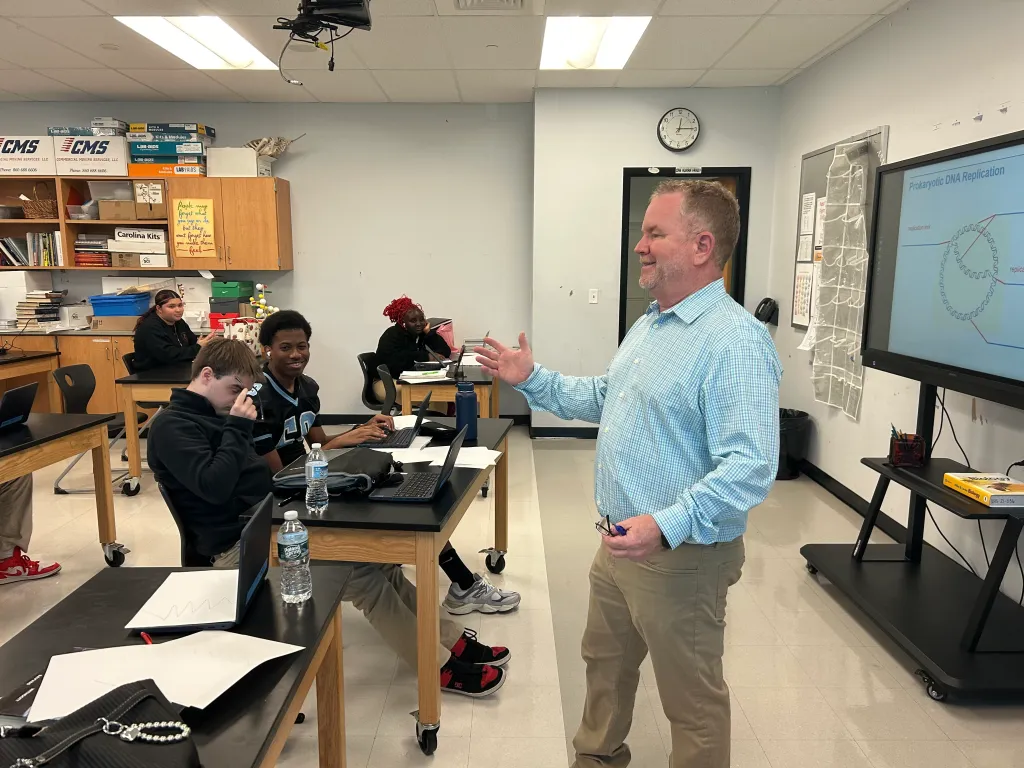
According to a Connecticut high school principal, his building vibrates (in a good way) when certain test scores come out.
And whether University High School of Science and Engineering Principal Sean Tomany means it is just a slight shake of the structure, or a full on earthquake-like rumble, he is sure students are excited by PSAT scores.
It is a goal of the Hartford magnet school to mentor students into achievement, and along with that comes the sought-after scores on such tests, Tomany said.
This year, the school is 38th “best” high school in the state, according to US News and World Reports High School Rankings, but also tied for first place in the nation for one of the ranking factors, the State Assessment Performance Rank, Tomany said.
He noted that the State Assessment Performance Rank is based on how aggregated scores on state assessments compare with U.S. News’ expectations given the proportions of students who are Black, Hispanic and from low-income households.
US News and World Reports looks at demographics and decides what average score should be, Tomany said.
“We’re closing the achievement gap, are far out performing the expectation, we outpace it more than anybody,” Tomany said.
“They are doing better than anyone else in the state and tied for number 1 in country,” he said of students and the State Assessment Performance Rank.
Schools are ranked on their performance on state-required tests, graduation and how well they prepare students for college, according to the US News and World Report rankings. The site did not name which school the Hartford one tied with.
The University High School of Science and Engineering, operated by Hartford Public Schools, is part of the Regional School Choice Office’s network of 44 magnet schools established after the Sheff v. O’Neill, the landmark civil rights lawsuit and designed to reduce isolation and establish a more diverse student body. Students at Tomany’s school are selected through an annual lottery.
It has 400 students and about 50% come from Hartford and 50% from surrounding suburban towns, Tomany said. Demographically, about 50% of the school’s students are Black, 38% Latino, and others are white and Asian, he said. It is 71% high needs students, which mean qualifying for special education or low income, qualifying for free or reduced lunch, he said.
According to Connecticut State Department of Education data, nearly 86% of Hartford Public Schools students are considered “high needs,” compared to a statewide average of 55%.
About how these ranking were achieved, Tomany said “We’ve created an environment where school is important and learning is important.”
“We’ve created a belief in these kids that they can do it,” he said.
The school is on the campus of the University of Hartford and high school students who qualify can take courses there and gain credit, Tomany said. Students who qualify also can take UConn classes, he said, for “early college experiences.”
Tomany used an example of one student who did not believe he would ever be able to further his education, but “you could see it change his mindset.” Over time in the school, “he started to believe ‘I could go to college,’” Tomany said.
“We really look at our kids and say who can do this?” he said. “There is a belief in it.”
“These kids are believing in themselves, the teachers are believing in them,” Tomany said.
Tomany said other factors that contribute to student success include working to keep freshman classes as small as he can, rigorous instruction, tracking of data to know what to focus on, using content around needed skills, constantly looking at teaching and “making sure we have really good teachers.”
Tomany said students come into his office and, “I pull up their scores and we talk about it,” and where change and help are needed.
For example, if data shows most students struggling with grammar, that helps to know what to focus on, he said.
The goal is to create a place where students can be successful regardless of who they they are and where they come from, he said.
“You become an educator because you want to help kids,” he said. “We get into education to change the world … over time you realize you do it.”
Of the US News and World Reports ranking, he said, “This is one aspect that shows us that we’re doing that, we did that, my kids and my teachers and my building.”



